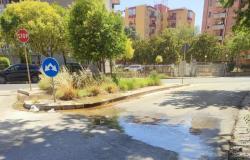Rome: from urban greenery to city vineyards, the new plan of the Campidoglio.
With the support of the PNRR and the Climate Decree, Rome will see over 800,000 new trees planted, including oaks, holm oaks, ash trees and poplars. Just two days ago, numerous of these trees were placed in thirty squares in the city. The Gualtieri council aims to make Rome greener through the implementation of urban gardens and green spaces accessible to citizens, demonstrating the importance of greenery in the city’s agenda.
The plan for urban vineyards
As Il Messaggero reports, in addition to the urban gardens, the Campidoglio has launched an ambitious project to reintroduce vineyards into the city, starting from the areas of the Circus Maximus, San Sebastiano and the Baths of Caracalla. The objective is to expand these crops in areas historically linked to viticulture, transforming uncultivated land into productive vineyards. This project not only enhances the historical and agricultural heritage of Rome, but also offers new tourism opportunities, creating a unique experience similar to that of the Clos vineyard in Montmartre, Paris.
The Vinoforum and the involvement of the associations
Today, on the occasion of the opening of the Vinoforum at Circo Massimo, the urban vineyard plan will be presented. The project, developed in collaboration with the Iter Vitis association, recognized by the Council of Europe, and the Donne del Vino association, aims to enhance the system of Roman wineries and local wine shops. Campidoglio intends to focus on areas historically linked to viticulture, such as Vigna Pia, Vigna Corsetti, Vigna Jacobini, and many others, rediscovering the toponymy that recalls the vineyards of the past.
A story of redemption and cultural identity
Emanuela Panke, president of Iter Vitis, underlines the importance of viticulture as an element of European identity, with Rome being a symbol of it. A scientific committee, led by Ernesto Di Renzo, professor of Anthropology of Taste at Tor Vergata, will study the most suitable areas for the new vineyards. Di Renzo describes the project as a “historical compensation”, restoring the Roman winemaking tradition, which has deep roots but which had been lost over time.
The grape varieties and the first steps of the project
The grape varieties already ready for the project include Bellone, Cesanese and Malvasia Puntinata. This project follows the experience of the Colosseum Archaeological Park, where Bellone cuttings, heirs of the Pantastica grape described by Pliny, were planted, creating the Barberini Vineyard.
Expected benefits
The Campidoglio plan not only aims to improve environmental sustainability and the quality of urban life, but also to revive tourism and local agricultural culture. The new plantations will offer citizens and visitors a unique opportunity to explore a green and productive Rome, intertwining history, culture and innovation in a single urban rebirth project.
© ALL RIGHTS RESERVED





